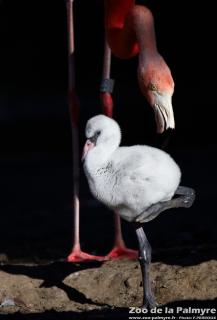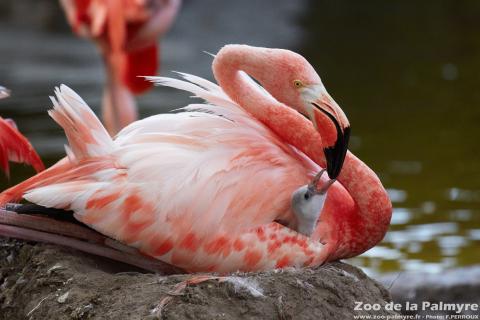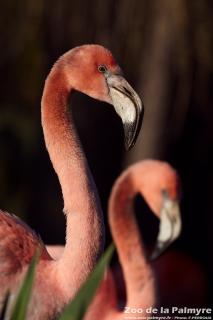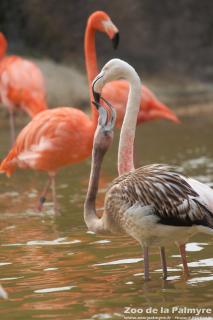Caribbean Flamingo
Caribbean Flamingo
Phoenicopterus ruber

Caribbean Flamingo
Caribbean Flamingo
Phoenicopterus ruber

-
Class
Aves -
Order
Phoenicopteriformes -
Familly
Phoenicopteridae
-
 120-145cm
120-145cm -
 2.5–4kg
2.5–4kg -
 30 days
30 days -
 1
1 -
 50 years
50 years
-
Diet
small fish, small crustaceans, algae, protozoa -
Habitat
lagoons, estuaries -
Range
South and Central America, Galapagos, Caribbean -
Population in the wild
En augmentation -
IUCN REDLIST status


Of the 6 species of pink flamingo, Caribbean Flamingos are the most brightly coloured. They are also the tallest.
Flamingos often stand on one foot. Some people claim that this stance helps them to rest or to balance; others think they conserve their body heat better by only putting one foot a time in the water.
Flamingos’ beaks are very sophisticated. When thrust into the water upside-down, they allow the birds to filter their food thanks to comb-shaped plates along their mandibles that act like whalebone in baleen whales. Lagoon algae and small invertebrates are trapped by these plates, while the birds’ rough tongues expel water.






